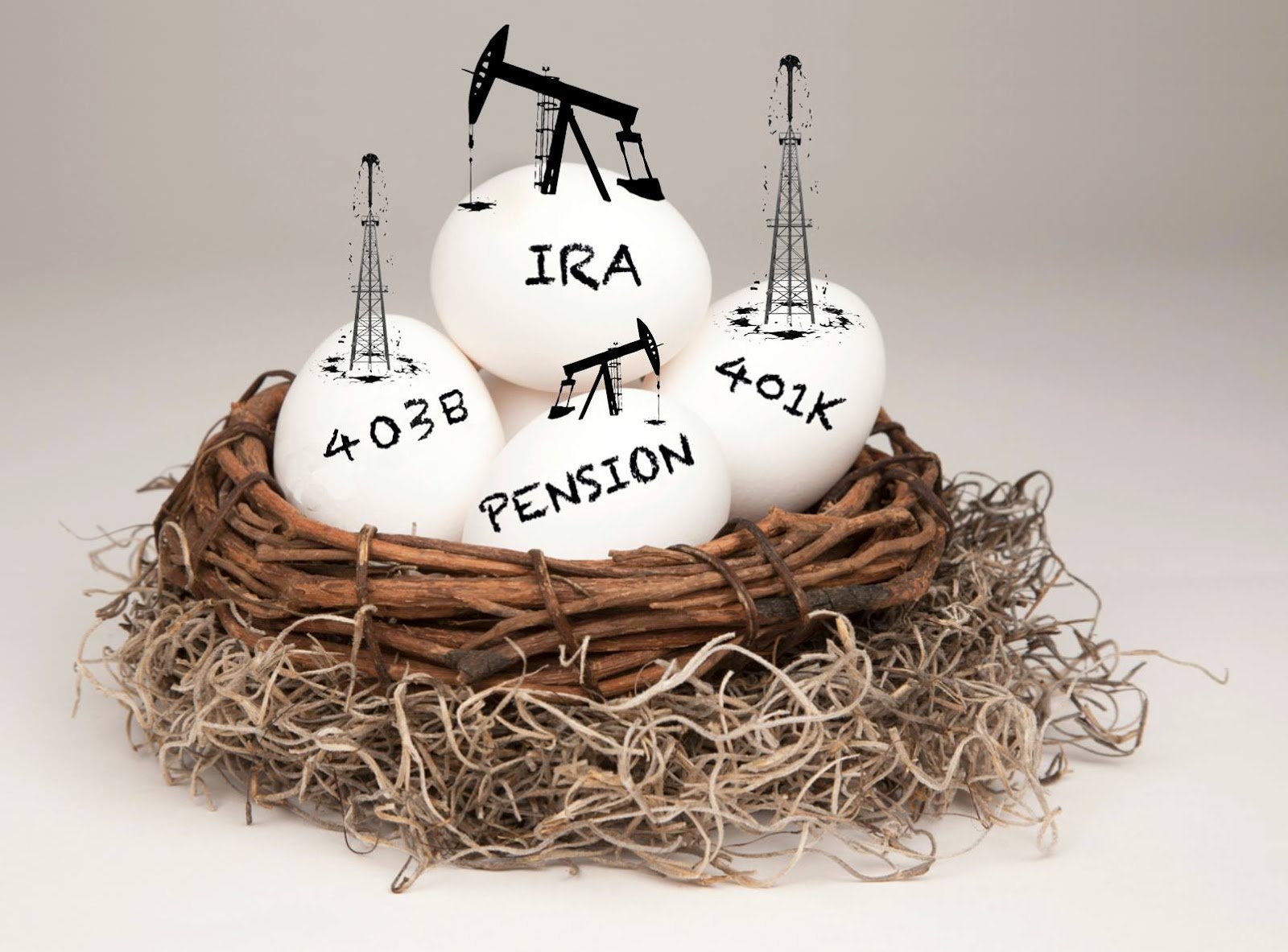
Welcome back for the second in a three part series about divestment from fossil fuels. To learn about divestiture in personal banking, check out the first installment here.
Besides personal banking, one of the most common ways in which people are invested in fossil fuels is via funds in retirement savings accounts (e.g. IRAs, 401k, 403b). I currently have a 403b account with Vanguard to which I accrued a small sum in my three years working in the non-profit sector following undergrad. I was disappointed to learn that many of the funds tied to my account were heavily invested in fossil fuel companies. Large mutual funds and index funds are invested in everything, from big tobacco to Monsanto to fossil fuels. Their objective is to encapsulate and track the entire economy, using benchmarks like the S&P 500. However, recent research shows that performance of such fossil fuel-invested portfolios do not outperform those that are fully divested (Trinks et al 2018).
So, how does one find out where their money is invested?
- Find out which financial asset company manages your retirement account and the name of your plan
- Determine which funds comprise your plan. Mine was a blend of four different Vanguard index funds
- Review the fossil fuel holdings associated with each of these funds. You can look through huge, cluttered annual reports online or check out this beautiful tool built by the Oakland non-profit, As You Sow: Fossil Free Funds
Here’s a snapshot from FossilFreeFunds.org of one of the Vanguard funds from my retirement account:
We can see that 10.51% ($33bn) of the portfolio is in shares of companies in the global top 200 carbon-emitters, coal-fired utilities, the coal industry, fossil-fired utilities, or the oil/gas industry. You can filter by these categories individually to see the more detailed breakdown.
Alternative Mutual and Index Funds for Retirement
While many funds are tied up in fossil fuel holdings, there is an increasing number of companies that are offering sustainable funds as an option to investors and some that offer exclusively fossil-fuel free funds. One such example is Green Century Funds.
Green Century Funds has three funds it operates, totaling roughly $500m in holdings. Compare this to over $300bn in the single Vanguard fund above. Another popular socially responsible fund is the Portfolio 21 Global Equity Fund (also ~$500m in holdings), which you can invest in via Trillium Mutual Funds.
A potential concern with these smaller index funds is greater volatility and slower growth compared to traditional index funds. However, both the Portfolio 21 Fund and Green Century Equity Fund have generally tracked their economy-wide benchmarks well. Another consideration is that many of these funds do tend to have higher operating fees, known as ‘expense ratios.’ In the case of Green Century, this is due to their concerted efforts to be active shareholder advocates. Their non-profit structure also means that any accrued profit is distributed to the consortium of non-profit groups by which they were funded back in 1991. Most of these groups are Public Interest Research Groups, including our state chapter, CALPIRG.
Here are five-year snapshots of growth for both the Vanguard Total International Stock Index Fund shown above and the Green Century Equity Fund:
How to Switch to these Alternatives
Transferring funds from an existing 401k or 403b account into a traditional or Roth Individual Retirement Account (IRA) is called a “rollover.” For tax and income reasons, the Roth IRA may be a better retirement investment option for younger, early-career individuals.
Here’s how you would initiate a rollover:
- Identify your IRA of choice
- Contact* the financial institution that currently manages your retirement account about their rollover policies and get the appropriate forms. Here‘s an example from Green Century.
- Go down the rabbit hole of the transfer process…
*code for calling and being put on hold for 5-300 minutes
In all seriousness, the transfer process can be completed in an afternoon. I hope this post shows that there are good long-term investment options available that don’t sacrifice your financial future nor the health of the planet by supporting fossil fuels. For a big breakdown of socially responsible funds across metrics than beyond fossil fuels, check out the Wikipedia page on Socially Responsible Investing. Remember to supplement these tips with your own research or conversations with a financial advisor.
Stay tuned for the third and final installment in this series where Nick will discuss stocks, institutional divestment and community activism.